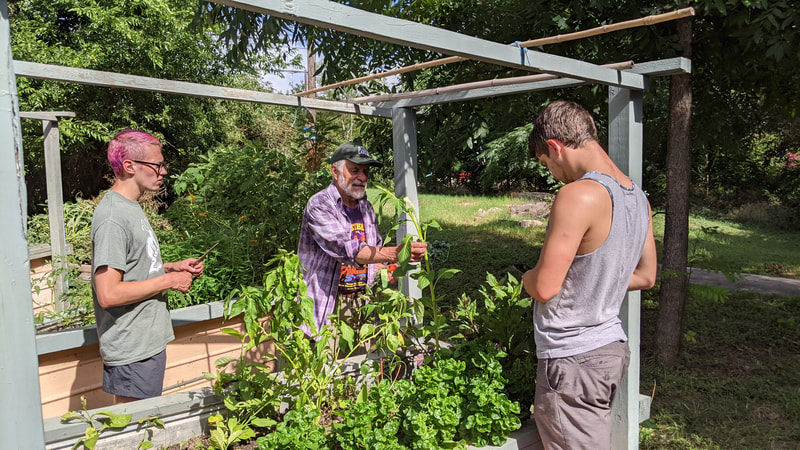|
This past Saturday we volunteered with longtime AOG member David Kramer at the Blackland neighborhood community project. We harvested and enjoyed a seedy, heirloom watermelon, cut back amaranth and tomatoes. We saved some green tips of the tomatoes plant in the fall. Watch this video to learn how to do it. The biggest challenge of the day was moving the bicycle bamboo trellis to a bed where malabar spinach had volunteered. After we cut back the plants in one of the beds, we did two things to revitalize the soil for the next crop.
1. Inoculated the soil with recycled/spent oyster mushroom blocks. This study shows that using spent mushroom blocks as fertilizer on beans, beets, garlic, greens, peas, peppers, radishes, and tomatoes is a viable alternative to other fertilizers and soil conditioners and should be looked at as valuable product and not simply a waste material. It is a cost effective way for farmers and gardeners to build soil health while operating in a sustainable fashion and the benefits seem to get better with time and persist long after initial application. Go here to sign up to get spent mushroom blocks. 2. Added Compost We had the opportunity to meet Alan Schroeder of Save the Food. Part of his food rescue mission includes converting organic food waste into compost. We took turns sifting compost from the last step of the process. It was steamy! |
AuthorWrite something about yourself. No need to be fancy, just an overview. Archives
May 2024
Categories |












 RSS Feed
RSS Feed